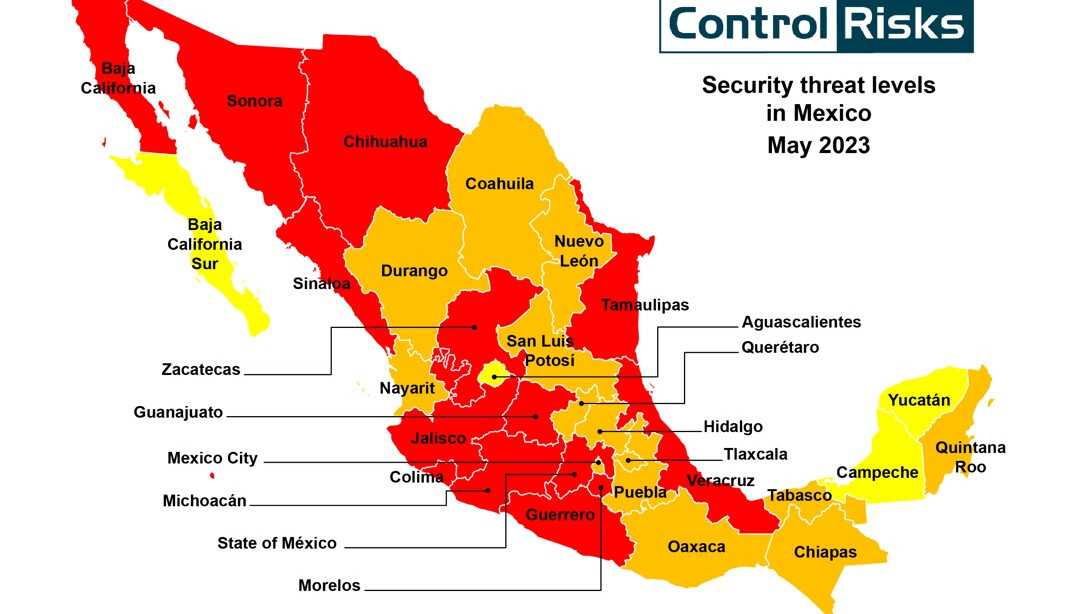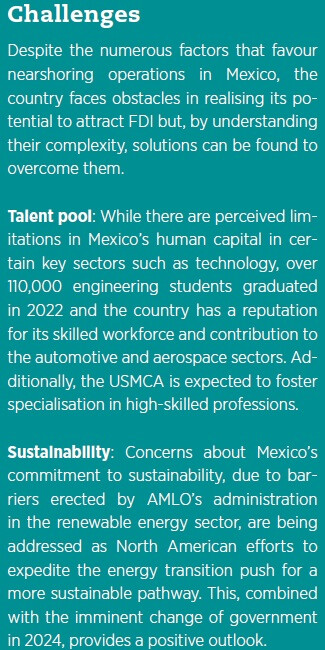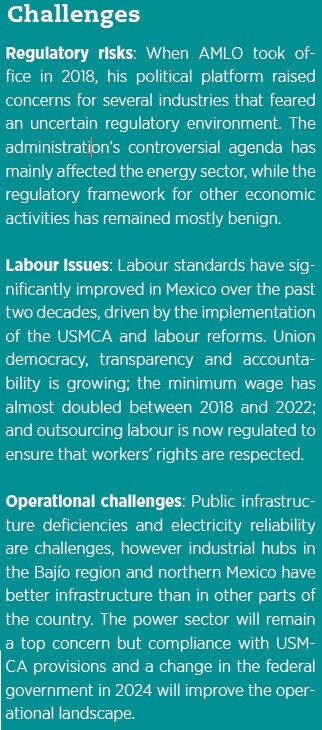Latin America's nearshoring boom
Mexico looks best placed to benefit from the shift in global supply chains, writes Alejandra Soto, Associate Director, Control Risks...

This article is the first of a three-part series exploring Mexico's nearshoring potential...
Although nearshoring to Latin America and the Caribbean (“LatAm”) is not a new phenomenon, the past year has intensified efforts to diversify supply chains due to geopolitical factors, rising operational costs, and logistics disruptions. Mexico stands out as an appealing nearshoring location due to its proximity to the US, advanced trade infrastructure, young population, stable macroeconomic environment, and participation in the United States-Mexico-Canada Agreement (USMCA).
To capitalise on these opportunities in a growing range of industries, however, organisations must not only understand the breadth of the challenges in the region, but also ensure that they are well equipped to navigate security, operational and regulatory risks.

Since the onset of the pandemic and the Ukraine-Russia conflict, severe supply chain disruptions, significant hikes in logistical costs and fuel prices have prompted more businesses to explore opportunities to shrink supply-chain distances, reduce associated costs and mitigate inherent geopolitical risks.
Allies for progress
LatAm is particularly well placed to capitalize on the nearshoring trend. According to a report published by the Inter-American Development Bank (IDB) in June 2022, nearshoring could lead to $78billion per annum in additional exports of goods ($64billion) and services ($14billion) across LatAm in the medium term. This will be underpinned by the wide variety of comparative advantages the region enjoys. In addition to geographical proximity to the massive US market and shared time zones, LatAm also has:
Longstanding bilateral relations with the US and Canada, known as “friendshoring”, supported by numerous preferential trade agreements.
Established exported-oriented economic models focused on strategic sectors like automotive, textiles, pharmaceuticals and rich mineral resources, as well as an emphasis on renewable energy development.
An accelerating digital transformation that facilitates the export of services (rather than just goods) and highlights the region’s burgeoning reputation as a technology and data hub.
Favourable demographic and social factors including a young workforce; the relatively low cost of labour in some, though not all, markets; an expanding pool of technology specialists; a growing domestic consumer market; and extensive family ties between LatAm and the US.
There are, of course, challenges for the region to overcome to fully realise its potential and capitalise on nearshoring. These include addressing infrastructure deficiencies to remove bottlenecks; improving schooling to address the skills gap between what employers need and the expertise available; and deepening regional integration to reduce trade tensions and increase competitiveness.

A spotlight on Mexico
Mexico is the country likely to reap the greatest benefits from nearshoring. It has unrivalled comparative advantages – such as its vast border with the US; an enormous transport network; well established cross-border infrastructure; huge renewable energy potential; a large, young and comparatively cheap workforce; and its status as a signatory to 13 free trade deals, including the United-States-Mexico-Canada Agreement (USMCA). The latter covers important provisions on labour rights, digital trade, protection for intellectual property and dispute resolution mechanisms.
In September 2022, Mexico and the US agreed to increase collaboration on supply chains related to semiconductor and EV production on the back of the Chips and Science Act and the Inflation Reduction Act. Mexican states with the greatest specialisation and growth potential for EVs and semiconductors are Baja California, Jalisco, Chihuahua, Tamaulipas, Nuevo León, San Luis Potosí and Querétaro.
The northern and Bajío regions stand out as attractive opportunities for nearshoring. The north benefits from its geographic proximity to the US and logistical advantages, while the Bajío region has a sophisticated multi-modal transportation network. Furthermore, President Andrés Manuel López Obrador (AMLO)’s government is currently gearing incentives and industrial policies towards the development of industrial hubs in southeast Mexico, which will likely draw investors to the area.
The manufacturing sector has benefited the most from the North American institutional framework. According to Mexico’s central bank (Banxico), nearshoring led to a 3% increase in Mexico’s manufacturing production from June 2021 to June 2022. Among manufacturing firms exporting their products, 24.8% reported increased demand or FDI, compared to 16.6% among non-exporters. The situation is especially benign for the automobile industry, but also for the textile, metal-mechanic and agricultural sectors. The current geopolitical context also opens the door for investment in new fields such as energy and critical minerals.
